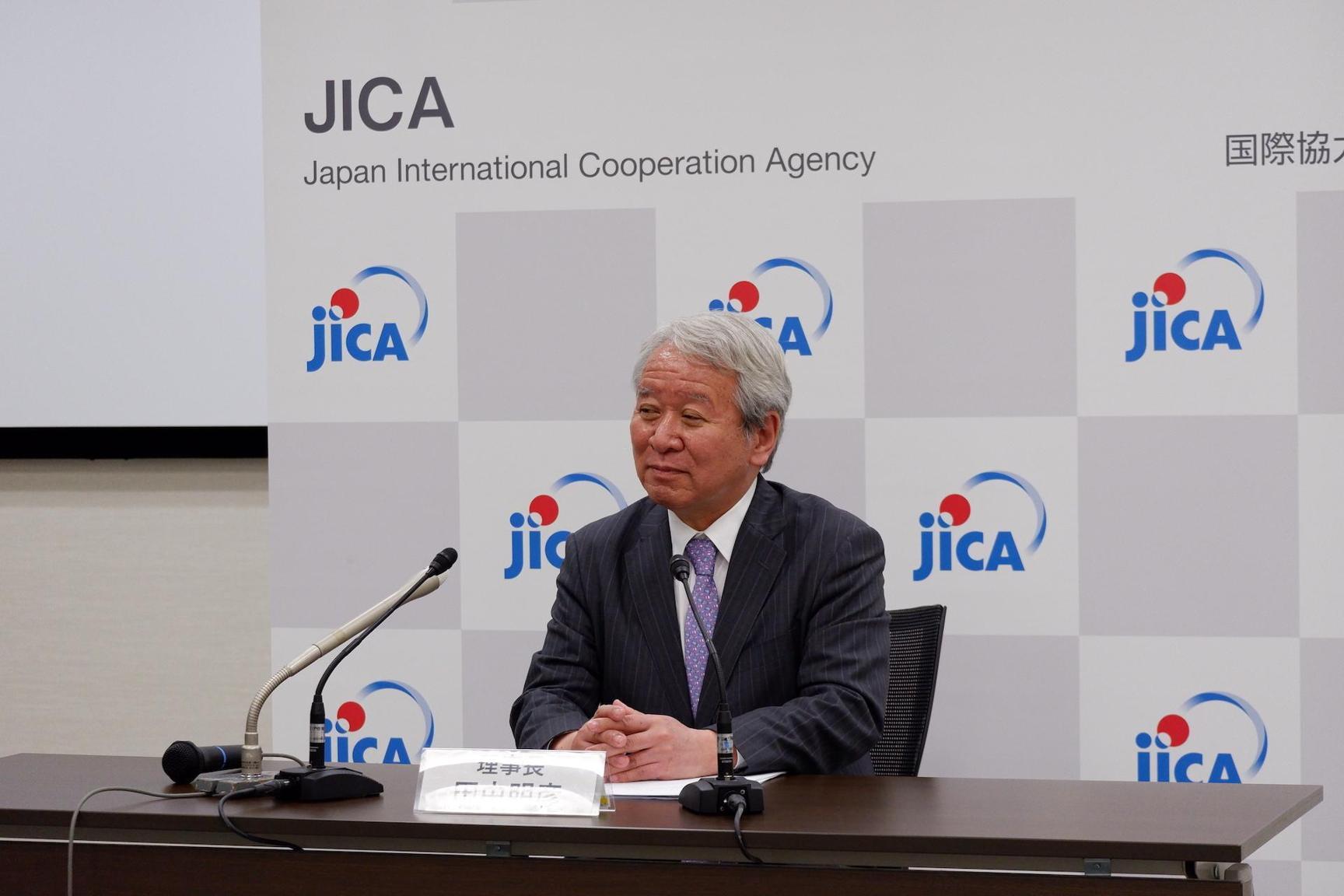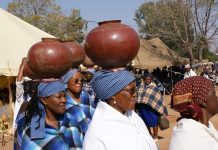Africa-Press – Botswana. Japan International Cooperation Agency (JICA) has unveiled a landmark at the entrance of Chobe Enclave in Muchenje, which tells the story of the enclave communities and their rich cultural ethos.
The landmark is a component of the ecotourism pilot project under the Department of Forestry and Range Resources (DFRR) incorporating capacity building for cooperatives that utilise veld products in Chobe Enclave villages being Mabele, Kavimba, Kachikau, Satau and Parakarungu.
The 3.5m tall metal structure distinctively bears the words, ‘Welcome to Chobe Enclave’ and is engraved with a tall tree that represents the Chobe Enclave forest reserves.
Under the tree on the right is a water reedbuck, an endangered animal believed to be facing extinction, while water lilies and reeds clasp on the left signifying the food and livelihoods drawn from natural resources.
Speaking at the culmination of the ecotourism session and landmark unveiling on Monday in Muchenje, JICA resident representative, Mr Hiroyasu Tonokawa stated that JICA was committed to improving the environment for industrial diversification.
He said JICA introduced cooperatives in the five villages to the eco-tourism model, developed interpretive and informative sign boards for the cooperatives and signed over the conservatorship of the landmark to Chobe Enclave Community Trust (CECT).
He indicated that the ecotourism project implementation would benefit the Chobe Enclave communities by drawing a high number of tourists to their villages for knowledge sharing and interactions.
Mr Tonokawa said the introduction of ecotourism was a very unique way to achieve conservation of natural resources and upliftment of livelihoods infused together.
“The protection of the environment and conservation of natural resources are important, which is why communities are educated to utilise natural resources around them in a sustainable manner,” he said.
Department of Forestry and Range Resources director, Ms Baitshepi Babusi-Hill stated that the five cooperatives of Vuche-vuche, Lwaavo, Mohuhutso, Tuchivusa and Kachimpate were trained to narrate their traditional way of life to tourists and earn a living from these tours.
She said each cooperative received signboards that showcased different cultural aspects like food, shelter, dance, attire and their stories that were dependent on the natural resources in their communities.
Ms Babusi-Hill said the Community Based Natural Resources Management (CBNRM) policy believed that communities that derived benefits from natural resources had an increased incentive to conserve them for sustained livelihood.
“The Chobe Enclave communities exist in very close proximity to Chobe forest reserve hence should be capacitated through initiatives such as ecotourism project, to derive value and benefits from this forest,” said Ms Babusi-Hill.
She said Chobe being a tourist destination of choice, ecotourism would add diversity to the tourism product, adding that communities needed to take advantage of the looming market, to supply natural indigenous products from the forest.
The director encouraged CECT to fully utilise the landmark and attract tourism tour operators to incorporate it in their packages and further advised cooperatives to set up craft shops and sell their artefacts.
Chobe Basket Weavers chairperson, Ms Ndirwa Simon extended gratitude to JICA and DFRR for imparting knowledge on them, which she said opened their minds extensively to conserve the natural resources as they gather products from the forest.
She said that the association comprised seven groups in Chobe, five in Chobe Enclave and two in Chobe East.
Ms Ndirwa encouraged weavers to nurture and safeguard the knowledge and skills acquired from the capacity building workshops.
For More News And Analysis About Botswana Follow Africa-Press






